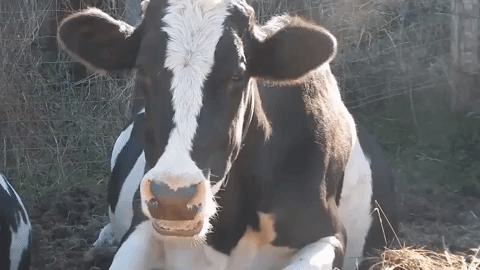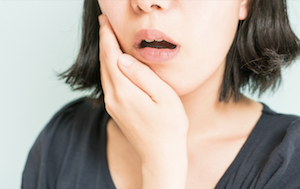Take a moment to think about how you chew. Have you ever though about it before? If you have no idea how you chew, grab something small to eat before you continue reading.

Do you avoid any areas in your mouth because it is painful? Do you chew on both sides of your mouth or only on one side?
If you found yourself chewing on only one side of your mouth, what was the reason? Most people end up chewing on only one side because of TMJ pain, tooth pain, a recent dental procedure, or due to missing teeth.
Here’s a common situation: You are eating and you begin to notice that you have an ache in your tooth. It hurts to bite down on that tooth, so you start to avoid chewing with it. The pain doesn’t seem to go away over the next few days, so you think that you will only have to dodge the tooth for a few more weeks until you get to see your dentist. You finally get in with your dentist who wants to perform a root canal on that tooth. It is recommended to continue to avoid the tooth for another week. The thing is, not chewing on that side of your mouth has already become a habit. Another week is no problem! You know exactly how to compensate so that you don’t hurt your tooth.
Sound familiar? Most people that end up in this scenario never return to chewing on that once painful tooth. They probably never even think about it again.
The problem with chewing only on one side of your mouth is that it increases stress to your TMJ and the surrounding jaw muscles. We are meant to chew in a grinding motion using both sides of the jaw.

When you chew on only one side of your mouth, you are having to constantly shift your jaw to that one side. This forces your jaw muscles to work repetitively in a single motion, which will result in them becoming overworked. This can lead to increasing muscle tension and pain.

This will also make it difficult to coordinate other movements because your muscles will only be trained to coordinate into the one motion. So it may make it challenging to handle the stresses of talking, yawning, or taking a large bite. This can typically lead to popping, clicking, and locking of your jaw.
Think about it like this: When chewing on both sides of your mouth, the work is shared 50/50 between the two sides. When you chew on only one side that becomes a 100/0 split. That is twice as much work and stress put through the chewing side. Would you like to be given twice as much to do at work over the next year while your coworker sits around and does nothing? No way! Neither do your jaw muscles.
The longer this habit persists, the harder it will be to get back to chewing on both sides of your mouth. Now, this does not mean that every bite should have food evenly distributed between both sides of your mouth. You may take a few bites on the left, then a few bites on the right, then back to the left. It should be a constant flowing motion. In fact, one of the roles of your tongue is to pass food back and forth between both sides to ensure that you chew evenly.
To get back to chewing on both sides of your mouth, a nice place to start is chewing softer foods on the unused side. This will desensitize any concerns about chewing on this side. Think of it as starting to lift weights for the first time. You are not going to start with the heaviest weight you can find (tough breads, almonds, taffy, etc.). You are going to start with lighter weights (yogurts, soups, rice, etc.).

This should NOT be painful! If you are having pain even with softer foods, try easing up how much you are using that side. Ideally, you can find a softness of food and an amount of chewing that is not painful. Even if that means only a few chews a meal. It’s a start!
Most people have the mentality of “no pain, no gain”. Do not feel like you have to push through pain with chewing to get better. When it comes to the TMJ, if you try to ignore the pain it will likely end up causing more problems and more pain. Part of the process of starting with soft foods is to retrain the muscles to do their job. Causing pain will do the opposite of this and will result in the muscles tensing and guarding.
Over time, you should gradually increase the toughness of the foods you are chewing on your previously unused side. Before you know it, you should be chewing more symmetrically and having no worries about eating!
If you have found yourself in this situation of chewing on only one side of your mouth be sure to follow these tips to get back to chewing evenly. If you have any questions, comments, or concerns, feel free to reach out through email, calling, or finding us on Facebook and Instagram.


